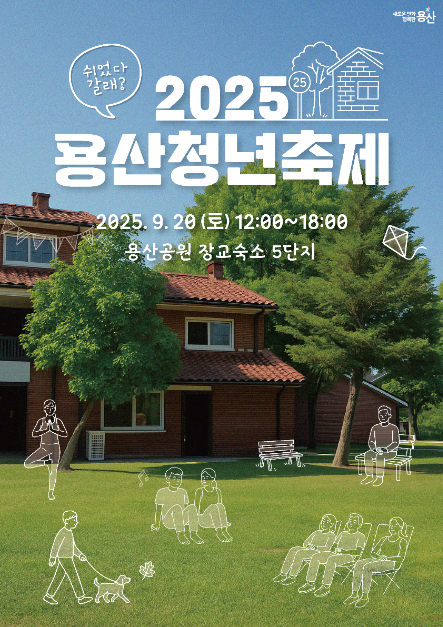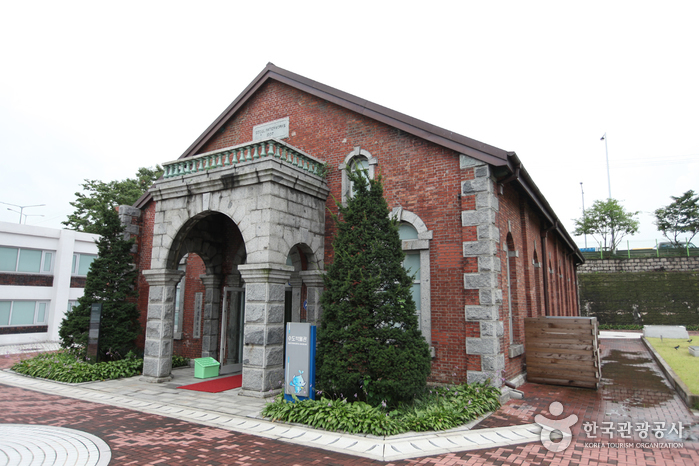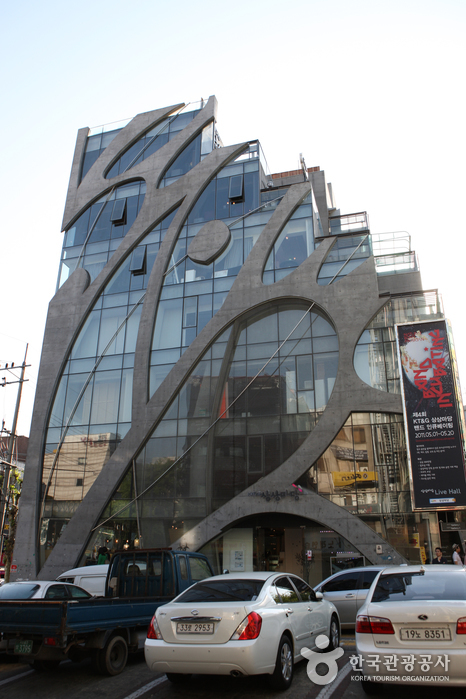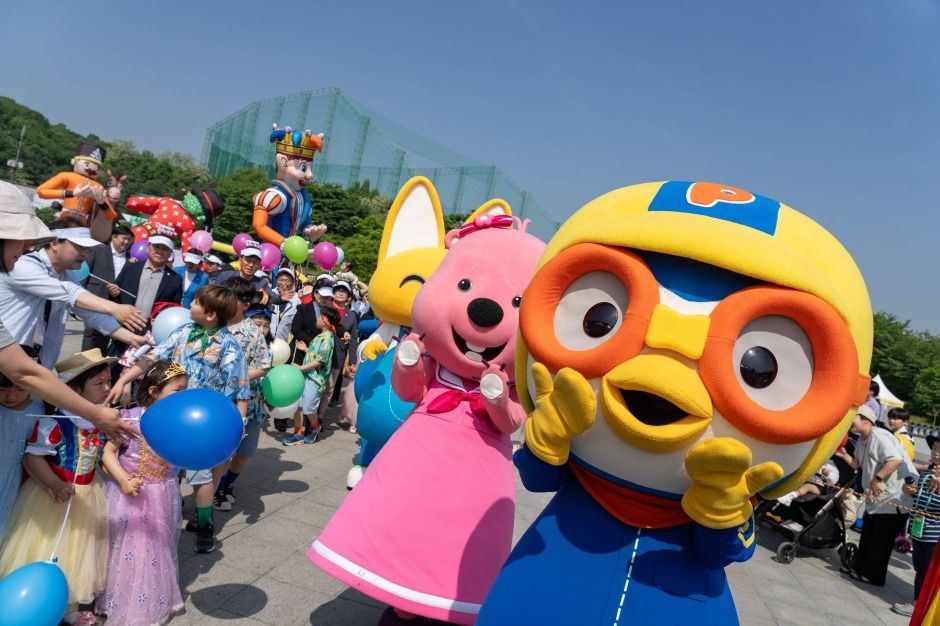Olive Young - Hongdae Jungang Branch [Tax Refund Shop] (올리브영 홍대중앙)
6.7Km 2024-04-18
1F, 2F Haechan Bldg., 68, Eoulmadang-ro, Mapo-gu, Seoul
-
Yongsan Youth Festival (용산청년축제)
6.7Km 2025-10-23
221 Seobinggo-ro, Yongsan-gu, Seoul
+82-10-9771-2090
The Youngsan Youth Festival, a wellness-themed event, invites both youths and residents to take the initiative for their well-being by achieving a balanced state of mental, physical, and social health. During the festival, visitors can enjoy dance performances, shows by popular singers, magic shows, traditional Korean music ensembles, and a commemorative ceremony featuring congratulatory remarks.
Beauty Play Hongdae (뷰티플레이 홍대점)
6.7Km 2024-06-18
16 Jandari-ro, Mapo-gu, Seoul
Beauty Play is a K-beauty experience center operated by the Korea Cosmetics Industry Institute and supported by the Ministry of Health and Welfare. It offers a wide variety of sample Korean beauty products for testing as well as diverse beauty experience programs such as makeup touch-up service (choice of base, eyes, or lips), personal color test, and skin evaluation. Visitors can also ask for product recommendation based on their skin type or skincare concerns. Beauty Play also frequently hosts beauty seminars and one-day classes, which are announced online via its official website. International tourists can apply for a full makeup service with an advance reservation free of charge.
Beauty Play has two branches in Seoul: Myeong-dong and Hongdae. Beauty Play Hongdae is located in Hongdae Street, where visitors can find recent trends, clubs, cafes and delicious foods.
Olive Young - Sangsu Station Branch [Tax Refund Shop] (올리브영 상수역)
6.7Km 2024-04-18
Store #101, 1F, 49, Wausan-ro, Mapo-gu, Seoul
-
Hongdae Chamsinhan Pharmacy [Tax Refund Shop] (홍대참신한약국)
6.7Km 2024-04-23
1F, 62, Eoulmadang-ro, Mapo-gu, Seoul
-
Waterworks Museum (수도박물관)
6.7Km 2025-01-17
27, Wangsimni-ro, Seongdong-gu, Seoul
+82-2-3146-5936
The Ttukseom Water Purification Plant (Waterworks Museum and Slow Sand Filtration Basin) was completed in August 1908 as the first water purification plant ever built in Korea. In 2008, it celebrated 100 years of history with the opening of the Waterworks Museum, which showcases the history and value of Seoul's public waterworks. The museum was recognized for its modern architectural design and designated Tangible Cultural Asset of Seoul No.72.
Sangsangmadang - Hongdae Branch [Tax Refund Shop] (상상마당 홍대)
6.7Km 2024-04-22
65, Eoulmadang-ro, Mapo-gu, Seoul
-
KT&G Sangsangmadang Arts Space (Hongik University) (KT&G 상상마당(홍대))
6.7Km 2024-03-12
65 Eoulmadang-ro, Mapo-gu, Seoul
+82-2-330-6227
KT&G Sangsangmadang Arts Space is a multifaceted cultural space established in 2007. Spanning 660 meters with a total floor area of 3,366 meters, it features facilities such as a theater, a concert hall, a design square, a gallery, and cafés. It offers opportunities for close engagement with culture. Located near Hongik University Station, it boasts excellent accessibility and attracts many visitors due to its diverse attractions.
Romi Story - Hongdae Branch [Tax Refund Shop] (로미스토리 홍대점)
6.7Km 2024-04-18
23, Wausan-ro 17-gil, Mapo-gu, Seoul
-
Gangbuk-gu Children's Day Festival (강북구 어린이날 대축제)
6.7Km 2025-05-08
173 Wolgye-ro, Gangbuk-gu, Seoul
+82-2-554-9795
Gangbuk-gu Children's Day Festival takes place at Dream Forest in celebration of Children's Day, which falls on May 5. Programs such as a sing-along show, parades, stage performances, interactive games, and a variety of fun rides are prepared to provide a day filled with fun and laughter.



![Olive Young - Sangsu Station Branch [Tax Refund Shop] (올리브영 상수역)](http://tong.visitkorea.or.kr/cms/resource/10/2889110_image2_1.jpg)
![Hongdae Chamsinhan Pharmacy [Tax Refund Shop] (홍대참신한약국)](http://tong.visitkorea.or.kr/cms/resource/53/2890653_image2_1.jpg)

![Sangsangmadang - Hongdae Branch [Tax Refund Shop] (상상마당 홍대)](http://tong.visitkorea.or.kr/cms/resource/97/2887997_image2_1.jpg)

![Romi Story - Hongdae Branch [Tax Refund Shop] (로미스토리 홍대점)](http://tong.visitkorea.or.kr/cms/resource/57/2890557_image2_1.jpg)

 English
English
 한국어
한국어 日本語
日本語 中文(简体)
中文(简体) Deutsch
Deutsch Français
Français Español
Español Русский
Русский